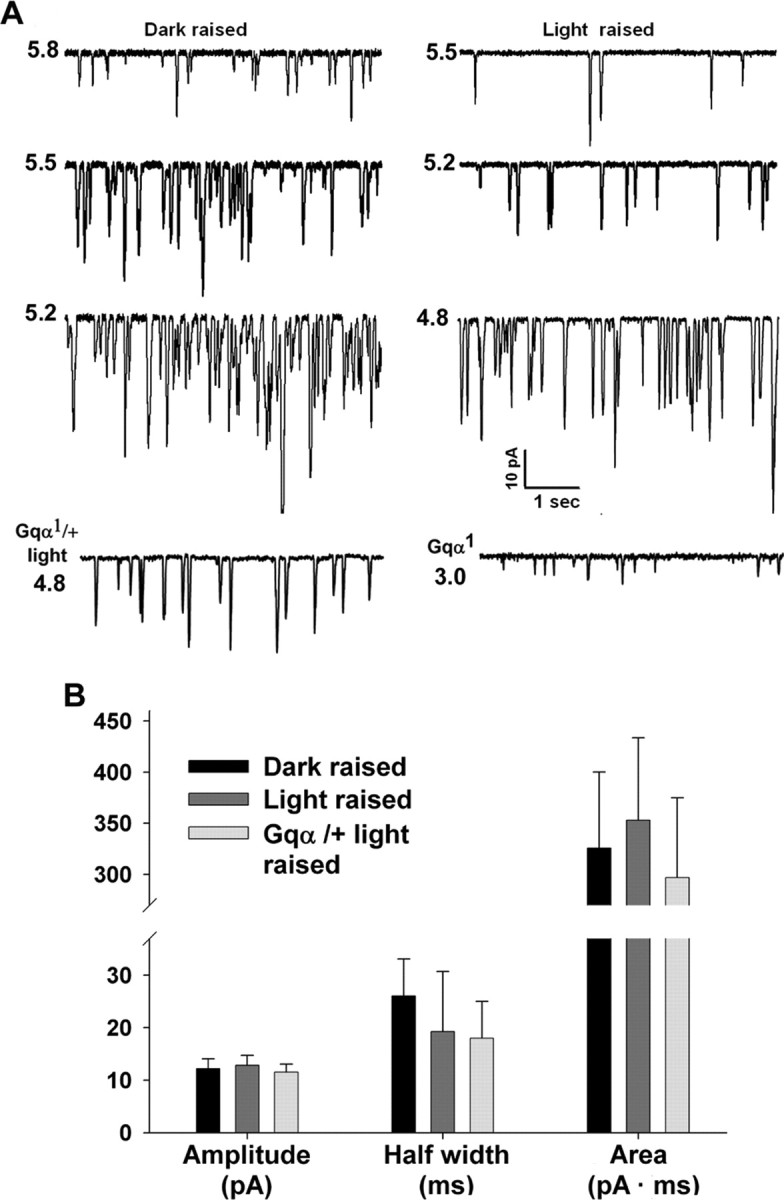Figure 1.

Prolonged illumination reduces quantum bump frequency without affecting bump shape and amplitude. A, Bumps elicited in response to different intensities of dim red lights in dark- and light-raised WT Drosophila (3 top lines) and in light-raised Gqα1/+ and dark-raised Gqa1 mutants (bottom line). The left column shows bumps recorded from dark-raised and the right from light-raised WT flies. The relative light intensity I is presented in −log units on the left of each trace. The relative intensity of the dim red lights is expressed in terms of equivalent intensity of orange lights (Schott OG 590 edge filter) that elicited the same frequency of quantum bumps in all figures. Notice that light intensity is different for the left and right columns. B, A histogram showing that despite a large difference in bump frequency between the two populations of dark- and light-raised WT flies and in the light-raised Gqα1/+ mutant, no significant difference in bump shape parameters is observed. In contrast, in the homozygote Gqα1 mutant, in which Gqα is drastically reduced, the bump amplitude is highly reduced. Error bars are SEM in all figures. There is no significant difference among the various columns (p > 0.05; n = 5–9).
